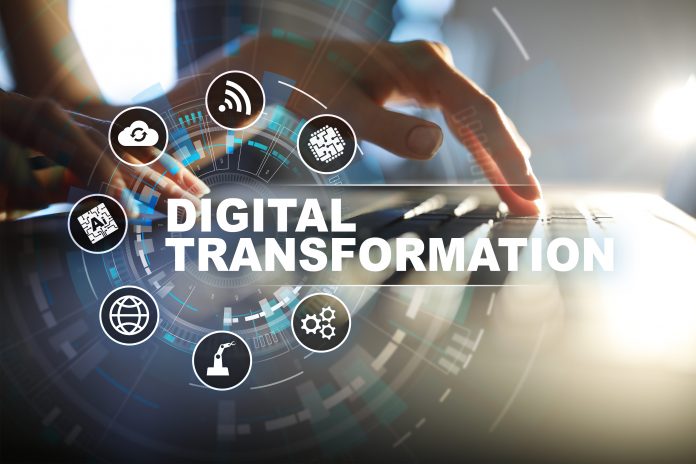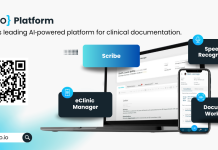Here, we lift the lid on the priorities of the UK’s Government Digital Service concerning accelerating the digital transformation of public services, including being responsive to the needs of the user
Government Digital Service (GDS), part of the Cabinet Office, is concerned with products, services and platforms to help government become trusted, joined- up and responsive to the needs of the user.(1) Of course, GOV.UK, Digital Identity and Government as a Platform enable individuals to interact with government.(2)
Tom Read, Chief Executive Officer of the Government Digital Service explains the purpose of the GDS in more detail, which is to “build a simple, joined-up and personalised experience of government for everyone. Using our unique position at the centre of government, we will develop services that just work for the user, however complex the underlying systems.” (3)
Accelerate digital transformation for users
Joanna Davinson, Executive Director, Central Digital and Data Office (CDDO) and Tom Read of GDS, recently said that COVID-19 underlines why digital must forefront in the government’s ambition to cater to user needs, so now is the ideal opportunity “to accelerate the digital transformation of public services across the whole of government.”
From April 2021, we discover that the Central Digital and Data Office (CDDO) will lead the DDaT (Digital, Data and Technology) function across government departments and that the GDS will be at the heart of the government’s digital transformation. “Over the upcoming months, both GDS and CDDO are moving forward with the next phase of digital delivery and transformation,” and they both explain and point to the building on “the successes of GOV.UK Notify and GOV.UK Pay to identify the new common problems that departments face, fixing the basics to give better experiences to our users”.
Central Digital and Data Office (CDDO)
The CDDO, certainly, has ambitious goals concerning digital and technology transformation and aim to improve the experience of government services, improve user access and harness the power of data. “Monitoring and assessing the health of the delivery of the government’s major digital and data programmes will be fundamental to CDDO as will tackling big problems like how we engineer for availability, resilience and interoperability, how we embed agile ways of working across departments supported by digital and technology funding models, sourcing strategies and procurement,” Davinson and Read go on to say.(4)
Accessibility regulations for the public sector
On the subject of users, we know after 23 June 2021; public sector organisations must ensure their websites and mobile applications are fit accessibility requirements. From that date, making public sector websites must accessible is a legal requirement and an accessibility statement must be published.(5) Making a website or mobile app accessible means that as many people as possible can use them, including those with deafness or impaired hearing, impaired vision cognitive impairments or learning disabilities and motor difficulties.
The gov.uk usefully defines accessibility: “Accessibility means more than putting things online. It means making your content and design clear and simple enough so that most people can use it without needing to adapt it, while supporting those who do need to adapt things.” Gov.uk adds that accessible websites are often easier to use, faster and appear higher in search engine rankings.(6)
2021 and beyond
Looking ahead, we know that when it comes to the GDS’s strategy for 2021-2024, their ongoing mission is “to build a simple, joined-up and personalised experience of government for everyone.” At the heart of the government, the GDS can “develop services that just work for the user”, even when the underlying systems are complex. In essence, GDS has to be selective about where they focus their money, skills and people to have the greatest impact on as many users of government services as possible.(7)
To find out more about the GDS’s future strategy, you may like to listen to a podcast with Tom Read, here.
References
(1) https://gds.blog.gov.uk/
(2) https://www.gov.uk/government/organisations/government-digital-service/about
(3) https://gds.blog.gov.uk/2021/05/20/government-digital-service-our-strategy-for-2021-2024/
(4) https://gds.blog.gov.uk/2021/04/06/the-next-steps-for-digital-data-and-technology-in-government/
(5) https://accessibility.campaign.gov.uk/?utm_source=Blogs&utm_medum=GDS&utm_campaign=access_regs
(6) https://www.gov.uk/guidance/accessibility-requirements-for-public-sector-websites-and-apps
(7) https://gds.blog.gov.uk/2021/05/20/government-digital-service-our-strategy-for-2021-2024/
What is sustainable IT?
Sustainable IT is the backbone of a greener future and a critical aspect of post-pandemic recovery, in the view of the Capgemini Research Institute. “To achieve it, organizations need an informed strategy, engaged employees and leadership, and sustainable software architecture. This will not only leave a greener footprint, it will also unleash the potential of smart technologies to drive environmental innovations and improvements in sustainability performance,” they explain.(1)
In the view of the Crown Commercial Service, sustainable IT is based on the circular economy model. This is a clear move from ‘take-make-dispose’, towards a more sustainable ‘make-use-recycle’ journey. They explain more about this, including the recommendation to buy refurbished or remanufactured IT equipment. “If you’re looking to buy your IT hardware such as laptops or tablets sustainably, there are a number of options that can help you. The main 2 options are buying remanufactured or refurbished, and leasing or buy-back, both of which can be done using our Technology Products and Associated Services (TePAS) framework.”(2)
A policy paper called Greening government: ICT and digital services strategy 2020-2025 sets out how government can provide resilient and responsible ICT and digital services for all customers and end-users. In particular, this strategy sets out how the government will work in partnership with industry and other sectors to provide ICT and digital services to help implement the 25 Year Environment Plan of the Department for Environment, Food & Rural Affairs (DEFRA).(3) Jason Kay from Opencast Software comments on this new strategy, created by a cross-government team but led by DEFRA. “This strategy is to be used by everyone involved and interested in government ICT and digital services, including government ICT and digital services professionals, end-users, and both suppliers and supply chains, and will provide environmental and economic benefits for all,” he says.(4)
References
(1) https://www.capgemini.com/research/sustainable-it/











